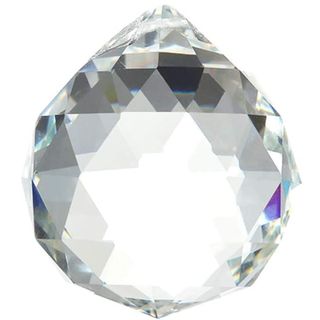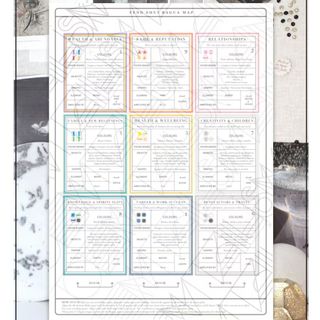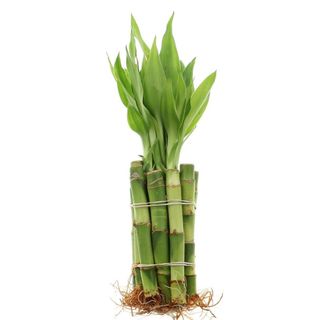This "map" is the secret to how Feng Shui experts make your home more peaceful - and you can use it in every room
This Feng Shui map can help you understand the different energy areas in your home, so you can boost qi and positivity
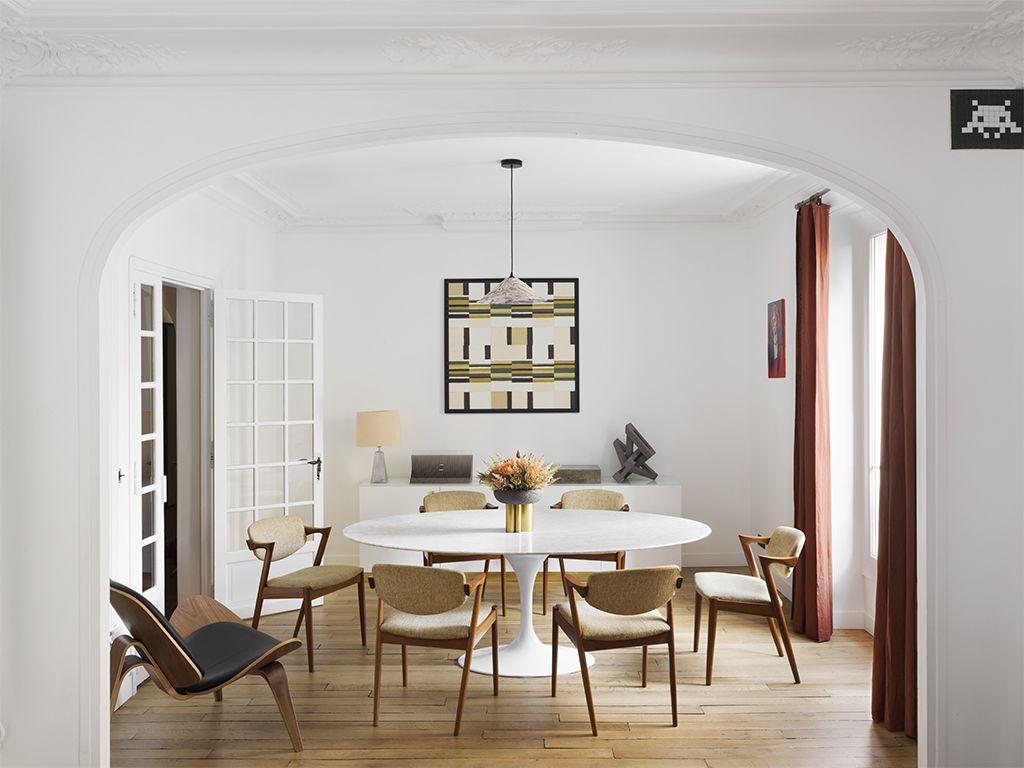

Have you ever heard of a Feng Shui map? The "bagua" is one of the most essential Feng Shui tool that helps you create an energy map of your home. It offers a systematic way to evaluate the energy field of your environment and create balance and harmony in all aspects of your life.
The map can be used in any size and style of home and can be laid over a floor plan. Also, the bagua can be placed over a single room, your bedroom, office, or desk. So whether it's living room Feng Shui, interiors, or exteriors you're interested in, this map can be your guiding light.
We asked Feng Shui experts to give us the low-down on how it works.
What is a bagua?
'The Bagua map is a guide or tool based on Chinese metaphysics,' says Laura Morris feng shui consultant and educator, and founder of Morris Feng Shui. 'It has been used in Feng Shui for thousands of years as a way to understand the world we live in. Typically, Feng Shui practitioners use the bagua to read the energy of a home, but a bagua can be applied to almost anything. Its shape can range from an octagon to a square, and it is made up of 9 areas or equal parts. These areas are called guas. There are eight guas each with a separate meaning and symbolism that surround the center or tai qi of the bagua.'
Whether you want to activate the kitchen, living room, or bedroom Feng Shui, you can use this tool to understand the home's energy fields.
How can you use a bagua map?
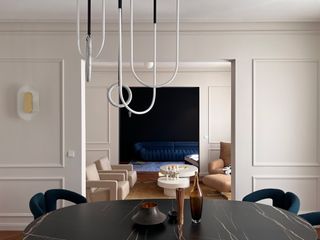
'You can use the bagua on your own home by dividing your home’s footprint into 9 equal parts,' says Laura. 'You then lay the bagua using your front door or the door to your bedroom as the 'bottom' of the bagua. Imagine you are stretching a piece of cellophane over your entire house, pulling it into each corner, and covering it completely with this transparent bagua. If you have an odd-shaped home, you may need to work with a Feng Shui consultant to figure out how to lay it. I always recommend that you start with your bedroom first, as it is easier and generally a square shape.'
Remember to use an accurately scaled floor plan of your home. If you have a difficult or complicated floor plan, you could start by first applying it to the bedroom layout as these are usually regular in shape, which makes it easier. This is also the place closest to you. So even if you do lay it on your entire home, we suggest you also try out the bagua in your bedroom.
What about the areas extending out of the bagua?
'If there is a space that is extending outside of the bagua map, it is called an extension,' says Feng Shui expert, Anjie Cho. This means you just have more energy in that bagua area. 'And you would not need to address it and acknowledge it. If you have an extension in the knowledge area, it could mean you have the propensity to cultivate yourself and accumulate more skills and knowledge.'
In case there is a completely missing area, say a living room corner or a part of the balcony, you can correct it by placing a mirror or plants in that space.
How can you activate specific areas in the bagua?
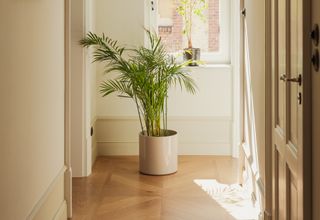
'You can select one, two, or three areas of the bagua you want to work on and use color to activate that area,' says Anjie. For instance, there are certain specific Feng Shui front door colors; and certain bedroom and living room tones that can help invoke more positivity and prosperity in your home. 'You can also bring in a plant to promote more vitality and growth in that space. Feng Shui crystal balls work as well, or you could simply just declutter that space to ease the flow of qi.'
3 Feng Shui tools to invoke positivity at home
Be The First To Know
The Livingetc newsletter is your shortcut to the now and the next in home design. Subscribe today to receive a stunning free 200-page book of the best homes from around the world.

Aditi Sharma Maheshwari started her career at The Address (The Times of India), a tabloid on interiors and art. She wrote profiles of Indian artists, designers, and architects, and covered inspiring houses and commercial properties. After four years, she moved to ELLE DECOR as a senior features writer, where she contributed to the magazine and website, and also worked alongside the events team on India Design ID — the brand’s 10-day, annual design show. She wrote across topics: from designer interviews, and house tours, to new product launches, shopping pages, and reviews. After three years, she was hired as the senior editor at Houzz. The website content focused on practical advice on decorating the home and making design feel more approachable. She created fresh series on budget buys, design hacks, and DIYs, all backed with expert advice. Equipped with sizable knowledge of the industry and with a good network, she moved to Architectural Digest (Conde Nast) as the digital editor. The publication's focus was on high-end design, and her content highlighted A-listers, starchitects, and high-concept products, all customized for an audience that loves and invests in luxury. After a two year stint, she moved to the UK, and was hired at Livingetc. Currently, as the design editor, her focus is on kitchens and bathrooms and she covers exciting before/after projects, writes expert pieces on decor, color, and occasionally reviews exciting travel destinations.
-
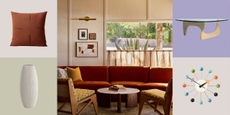 Modernism Week Has Me House Hunting, but While a New Home Isn't on the Cards for Me, Shopping the Look Is Easy
Modernism Week Has Me House Hunting, but While a New Home Isn't on the Cards for Me, Shopping the Look Is EasyBringing together the best of mid-century and desert modernism, Palm Springs décor is any inherently cool, and totally timeless
By Devin Toolen Published
-
 CB2's Stylish New Collaboration With "The White Lotus" Will Save You Spending $3,000 on a Hotel Room
CB2's Stylish New Collaboration With "The White Lotus" Will Save You Spending $3,000 on a Hotel RoomCelebrating the show’s highly anticipated third season in Thailand, the collaboration has all the ingredients for an indulgent escape (sans TSA)
By Julia Demer Published
